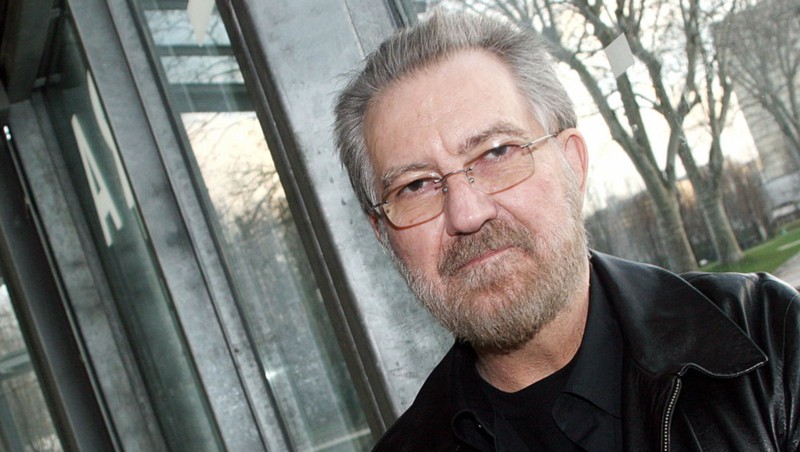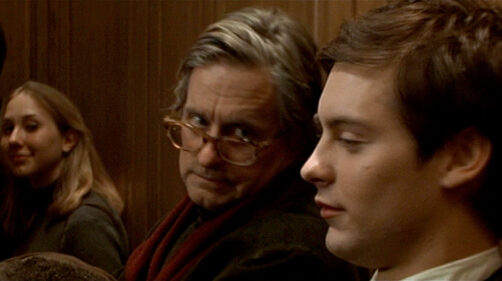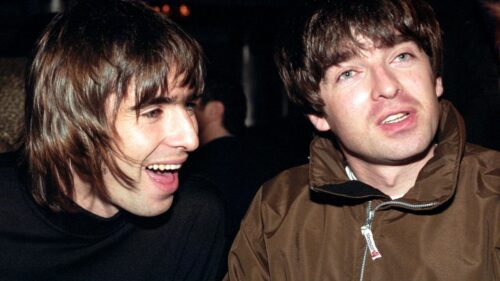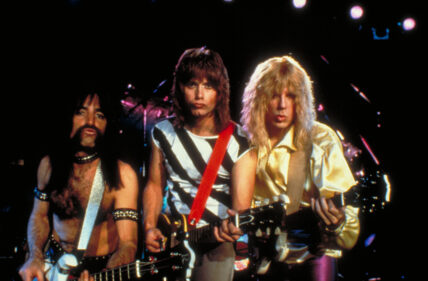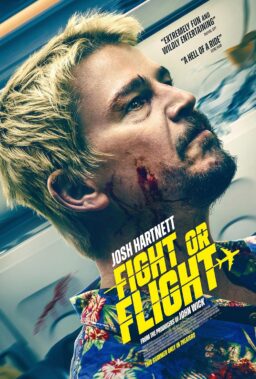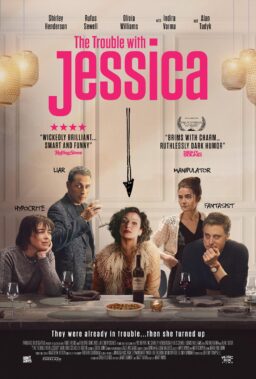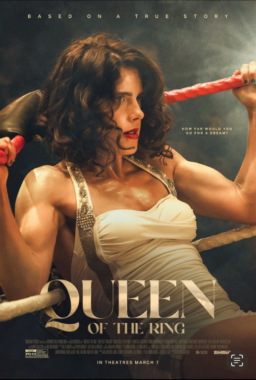American horror iconoclast Tobe Hooper’s best films spoke to his weird, bitter sense of humor. Hooper would try, in a handful of post-“The Texas Chain Saw Massacre” efforts, to confirm what many fans of that earlier film already knew about that darkly comic 1974 horror show of pitiless post-Vietnam disillusionment: everything is a joke because nothing is funny in a world hell-bent on its own destruction. “The Texas Chainsaw Massacre 2,” the queasily comic 1986 sequel, often plays out like a punch-drunk self-parody. The Hooper-directed sequel’s most memorable scenes are tellingly the ones where Dennis Hopper’s impotent ex-Texas Ranger arms himself in a lumber store with chainsaws of various sizes, and then later sword-fights flesh-wearing psychopath Leatherface … with a chainsaw. Before that, Hooper sicced gonad-shaped aliens on poor little Hunter Carson in his beguiling 1986 “Invaders from Mars” remake. And don’t get me started on joyfully lurid 1985 scifi/horror hybrid “Lifeforce,” the “Citizen Kane” of sex-negative naked-space-vampire films. The fact that Mathilda May’s clothing-challenged cosmic succubus antagonist is discovered aboard a spaceship that looks suspiciously like an I.U.D. says a lot about Hooper’s knowingly twisted sensibility.
Hooper’s style would change over time as his career hit more valleys than peaks, especially after rumors about whether he really directed “Poltergeist” overshadowed his involvement in that pop horror milestone. But if you watch enough of his films, you can’t help but feel like Hooper never really took horror tropes seriously, not even the ones that he instinctively stumbled through in his breakthrough 1974 feature. Then again, one of the reasons that “The Texas Chain Saw Massacre” left a searing brand upon the brains’ of generations of horror fans and filmmakers is that Hooper caught viewers completely by surprise. I suspect that he knew he couldn’t capture that kind of lightning in a bottle twice, though he would necessarily try anyway. There was, in that sense, a dark creative desperation, and gallows humor coursing through the arteries of his disjointed filmography.
You could even see Hooper’s personality in lesser efforts like “Spontaneous Combustion,” with a lead performance from Brad Dourif that is unhinged in a way that makes this otherwise stillborn 1990 post-atomic-age creature feature fitfully compelling. Even “The Mangler,” a disposable Stephen King adaptation about a possessed laundry-folding machine, has a handful of indelible images, especially anything involving the film’s inhuman, industrial-age villain which, in the right light, looks like a more nakedly malicious version of the man-devouring machine that gobbles up Charlie Chaplin in “Modern Times.” Hooper’s films stand apart from the post-golden-age work of contemporaries like George Romero, and Wes Craven because they are characteristically infused with barely-sublimated resentment and self-conscious regret about their inability to escape the trappings of the horror genre.
To get in on the gag, you’d have to start with “The Texas Chain Saw Massacre,” a film that gets more disturbing and funny the more you watch it. You can never tell how seriously you can take Hooper’s film because what made his and co-writer Kim Henkel’s pitiless scenario so upsetting is that it almost never lets up. There’s no moral relativity in “The Texas Chain Saw Massacre,” not like there is in Craven’s “The Last House on the Left.” And there’s no superficial humanity to Leatherface’s family as there is in Romero’s “Night of the Living Dead” since all of the Leatherface household’s domestic activities are grotesque. Just look at the scene where Leatherface sprints after the late Marilyn Burns’s heroine Sally in the woods at night for what feels like an eternity. Leatherface doesn’t stalk his prey, so the choreography—or maybe just the rough trajectory—of this chase scene is ragged and inelegant. What makes it so disturbing is that Leatherface seems inexhaustible, and omnipresent.You sometimes can’t tell if the helplessness you feel while watching this scene is itself the punchline, or the set-up to a gruesome, still-unfolding shaggy dog joke.
This sequence is even funnier and more surreal when you realize that Gunnar Hansen, the 6’4” Icelandic actor who played Leatherface, was performing this scene on a 12-16 hour day while sweating through his only costume (it was summer in Austin, and temperatures ranged from 90-100+ degrees Fahrenheit). Hansen’s crude flesh-suit make-up was designed by art director Robert A. Burns, and patched together with stitches and wire. The amateurish, hand-made quality of Burns’s handiwork enhanced the effect of Hansen’s ghoulish appearance both for his castmates, who did not see Hansen in full make-up until their characters were assaulted, and for viewers, who believed that this skin-shroud was fashioned by Leatherface out of his victims’ body parts. The deeper you examine this scene, and how it works, the more you realize that it’s making you squirm with laughter because it’s endlessly dark.
Hooper would go on to make a handful of films before revisiting Leatherface in the fitfully effective 1986 tongue-in-and-out-cheek horror-comedy “The Texas Chainsaw Massacre 2.” That film’s very existence is a product of Hooper’s wayward career, which sadly did not take off thanks partly to the controversy surrounding his authorship of “Poltergeist.” Hooper would spend the rest of his career defending himself from accusations that claimed his contributions were minor compared to the directorial work of screenwriter/producer Steven Spielberg’s. First there was a 1982 Los Angeles Times article that suggested Spielberg was the film’s real helmer. Then cast and crew members delivered conflicting reports followed, including the late Zelda Rubinstein’s not-too-subtle insinuation that Hooper was incapacitated due to cocaine use. Spielberg himself could not stop these rumors, so it’s not surprising that a new wrinkle is added to the Spielberg vs. Hooper story every few years, like Blumhouse‘s recent interview with “Annabelle” director John Leonetti about brother and “Poltergeist” cinematographer Mark Leonetti’s experience working on that earlier film’s set. According to Mark, Spielberg did a lot of heavy-lifting for Hooper in anticipation of an impending director’s strike. Still, the general consensus at this point, is that while Hooper was involved behind the camera, his work was perfected, or adjusted by Spielberg.
Fast-forward four years later, when “The Texas Chainsaw Massacre 2” went to be the most successful of Hooper’s three collaborations with epochal Israeli schlockmeisters Menahem Golan and Yolan Globus. The film did so well for Golan and Globus’ Cannon Group that he was, at one point, nominally attached to direct a Spider-Man movie during the brief period that Golan and Globus owned the rights to the Marvel Comics superhero. Still, it’s telling that “The Texas Chainsaw Massacre 2” was, on many levels, an over-sized, playfully immodest response to Hooper and Henkel’s earlier film. Their previous commentary on post-Summer of Love Americans’ failure to force a paradigm shift away from society’s general trend of objectifying and terrorizing women is subtle compared to the ostentatious, anti-final girl role that heroine Caroline Williams takes on as radio DJ Vanita “Stetch” Brock in “The Texas Chainsaw Massacre 2.” The film tellingly concludes with a shot of Williams twirling around the chainsaw she uses to defeat Leatherface with, a callback and reversal of the very ending of the first “The Texas Chain Saw Massacre.”
Not everyone got, or maybe more accurately appreciated the humor of “The Texas Chainsaw Massacre 2.” For example, Rick A. Burns disliked the relatively polished look of make-up artist Tom Savini’s design for Leatherface. Burns probably understood that the humor in “The Texas Chainsaw Massacre 2” stemmed from the understanding that while everything is bigger, nothing has substantially changed. But so what? The dark road that Marilyn Burns, laughing maniacally while covered in blood, rides down at the end of “The Texas Chain Saw Massacre?” That’s the ’80s the Hooper sends up in films like this sequel, as well as “Lifeforce,” “The Funhouse” and “Invaders from Mars.” It’s fitting then that, while “Texas Chainsaw Massacre 2” was made in 1986, it was the last feature film Hopper made during the ’80s. What else could he say about his disgust about his participation and inability to prevent the sheer empty-headed decadence of the period? The film remains loud, unpleasant, and sometimes rather inspired. It’s just as much a product as a critique of the maximalist excesses that Hooper, screenwriter L.M. Kit Carson, and their collaborators targeted, right down to its “The Breakfast Club“-mocking poster.
In the following years, Hooper’s projects were often defined by their wild tonal shifts from goony gross-out humor, as in his contributions to EC Comics-inspired ’90s projects like “Tales from the Crypt,” “Perversions of Science,” “Night Terrors,” and “Body Bags,” to merciless darkness, as in his two short contributions to the short-lived “Masters of Horror” TV anthology series in 2005 to 2006. These projects all feel like they were made by a singular personality, despite their varying degrees of quality. I can’t think of too many other filmmakers whose horror films are as inflected with such creative helplessness, and mirthless humor (maybe Lucky McKee and Takashi Miike). Hooper’s films always give me the sense that he might, at any moment, take a hard-left turn, and brattily self-deconstruct everything that came before him. Horror was always a funny business for Hooper, and it showed by the way that his audience’s laughter stuck in our throats.

